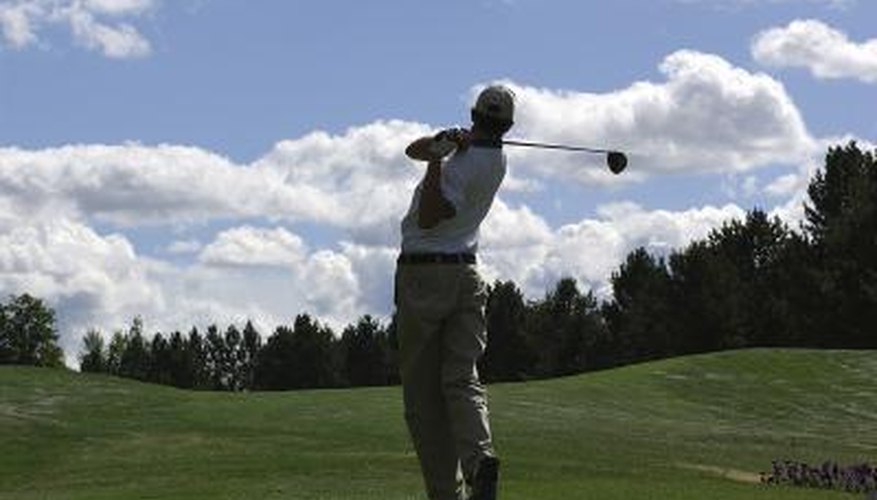The swing plane in a golf swing plays an important role in swing path and determines the angle of approach into the golf ball. The angle of approach can be flat or steep. A flatter swing plane will produce a lower ball flight while a steeper swing plane will create a higher ball flight. All players have their own unique swings through the golf ball. Some players swing with a one-plane swing while others swing with a two-plane golf swing. Understanding the swing plane will allow you to self diagnose and correct swing faults.
- The swing plane in a golf swing plays an important role in swing path and determines the angle of approach into the golf ball.
- Understanding the swing plane will allow you to self diagnose and correct swing faults.
Make a video recording of a golf swing from "down the line." This means the angle of viewing is such that one could watch the ball in flight going directly away from the camera. The video should begin with the clubhead in address position. Technology is now available on smart phones to record and analyse a swing sequence. Other software can be used on laptop or desktop computers, provided you download the recorded video to a computer.
Mark the angle of the swing plane by drawing a line that begins at the clubhead, runs up the shaft, intersects the body (at a point around the belt buckle) and extends through the body. The clubhead (when viewed down the line) should follow this line during the start of the backswing. Many golfers swing the club differently, and thus some will swing along a plane that takes the clubhead below or above the swing plane line.
Draw a line that extends from the clubhead in the address position to a point above the shoulders. This will represent the backswing plane. At the top of the backswing the hands should be in a position around the backswing plane line. The downswing should start down between the address swing plane line and the backswing plane line.
- Mark the angle of the swing plane by drawing a line that begins at the clubhead, runs up the shaft, intersects the body (at a point around the belt buckle) and extends through the body.
- At the top of the backswing the hands should be in a position around the backswing plane line.
TIP
Golfers of all skill levels will make different swings. Body type, height and length of arms are all variables that will contribute to slightly steeper or flatter golf swings. The club head should travel down the address swing plane line as the club head approaches the impact position. At impact, the club should be extended down nearly identical to the original set-up position.
